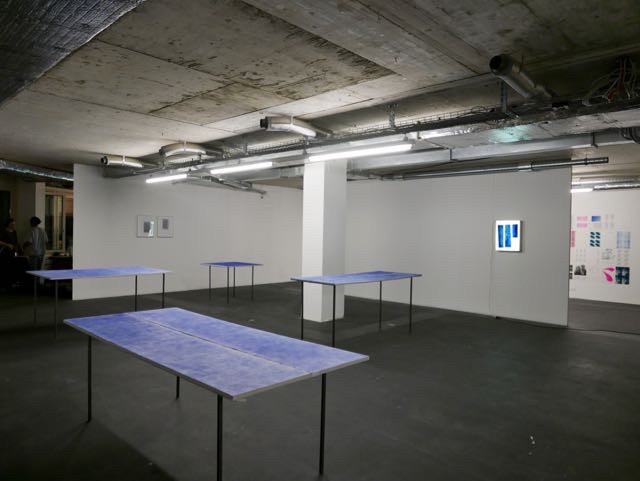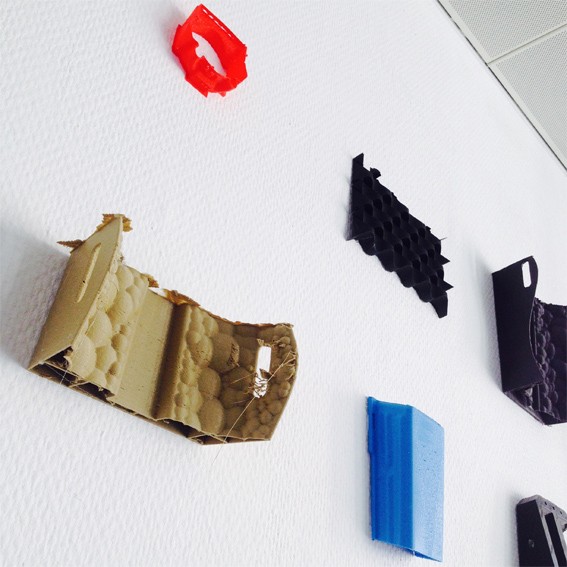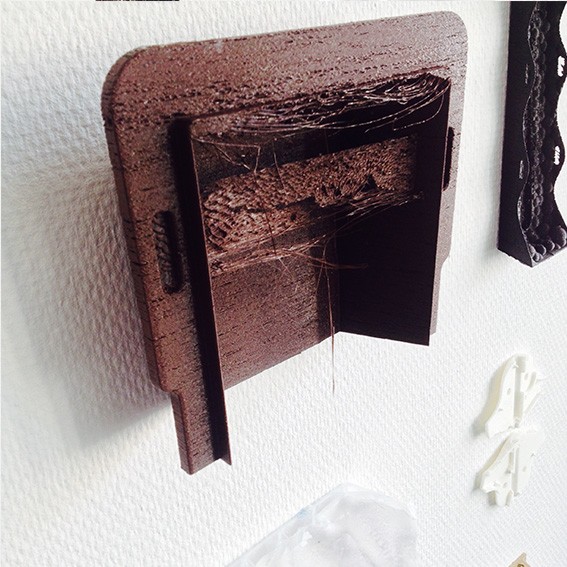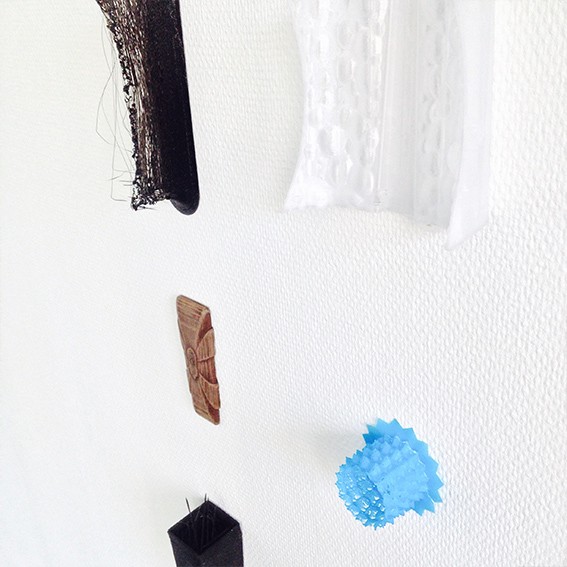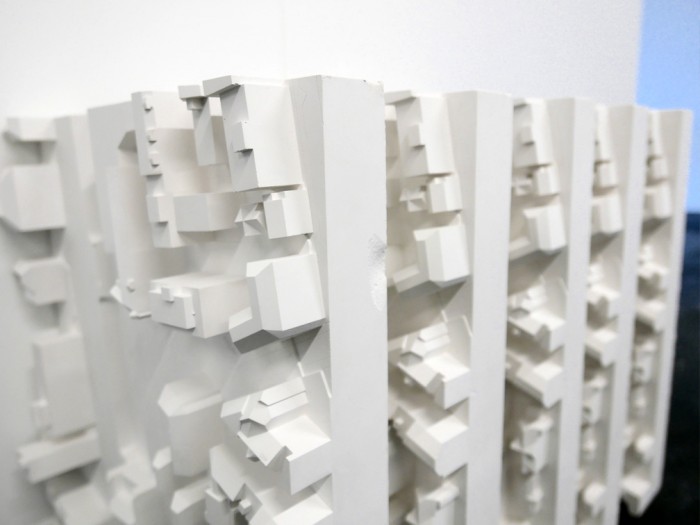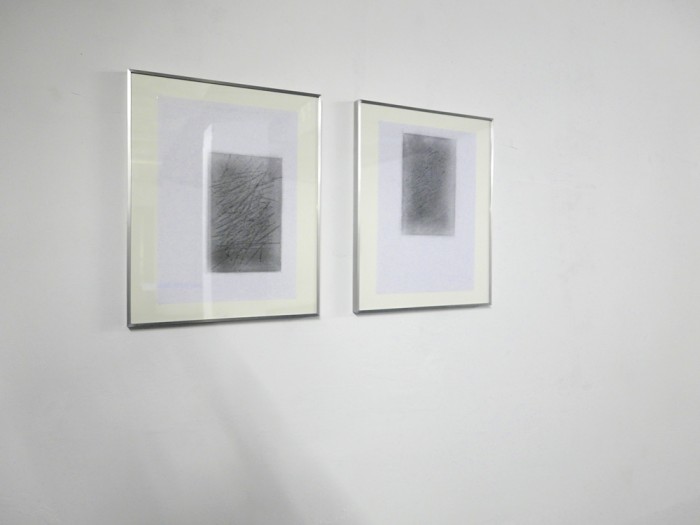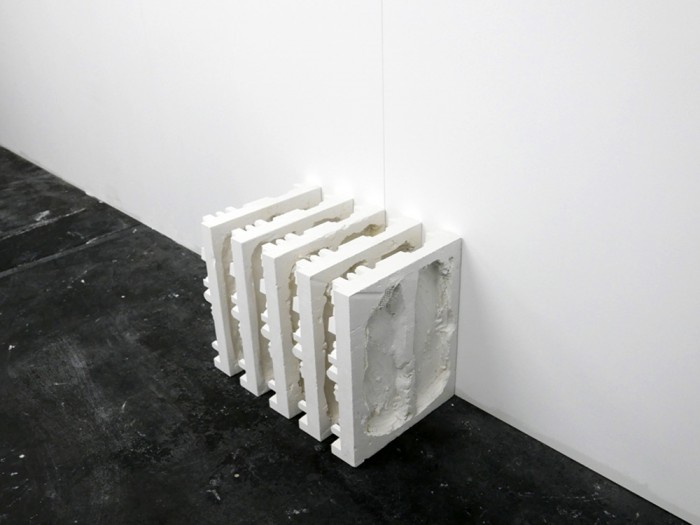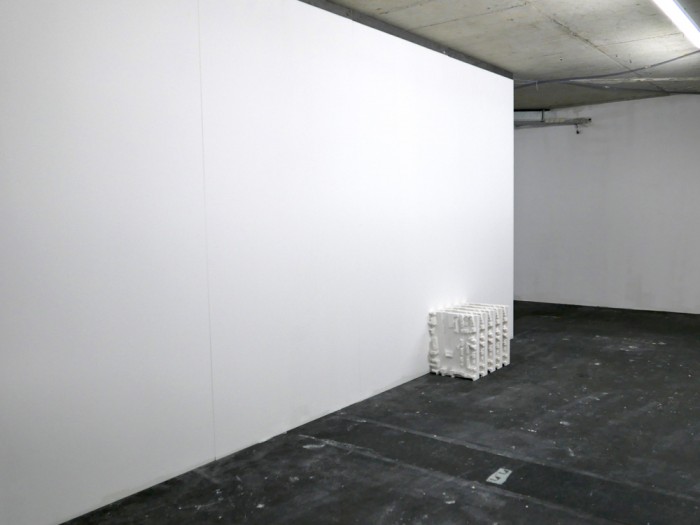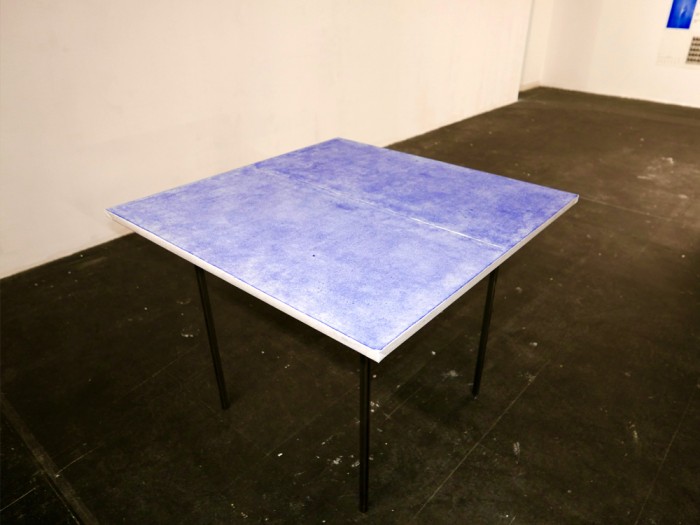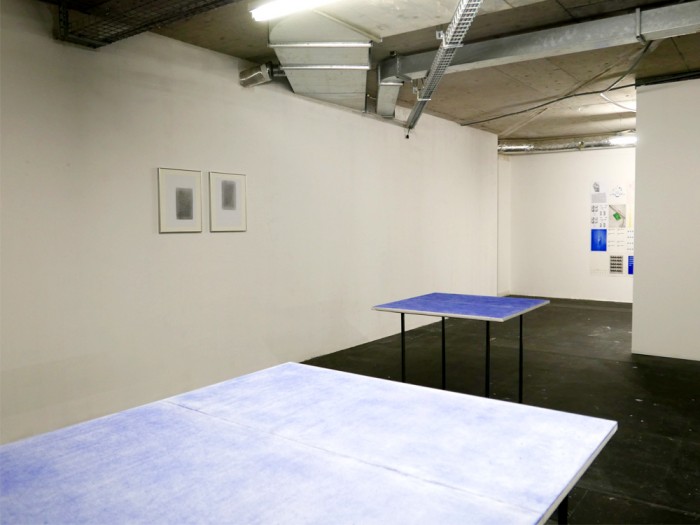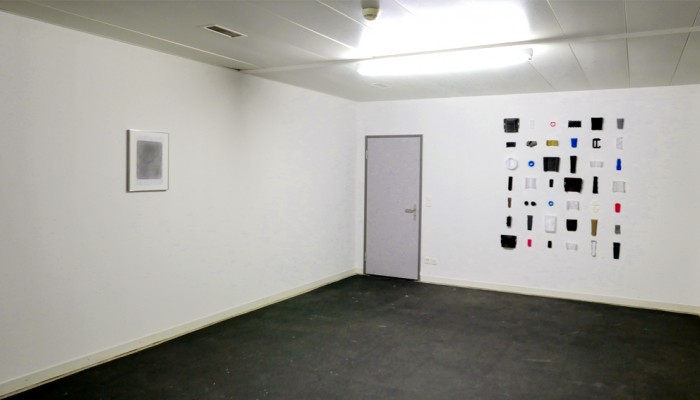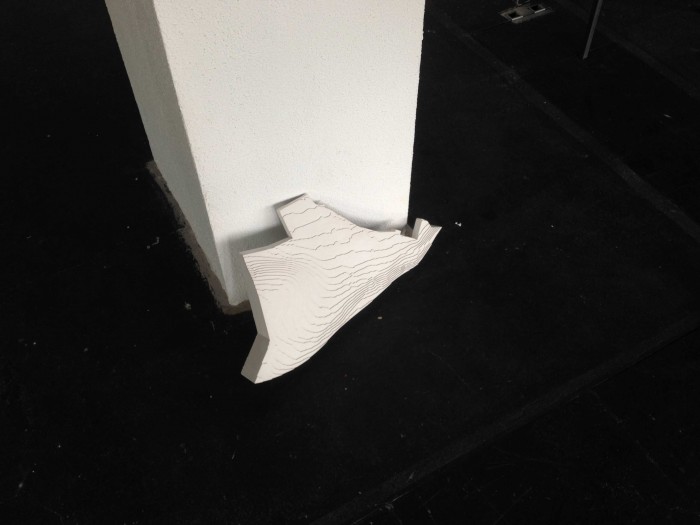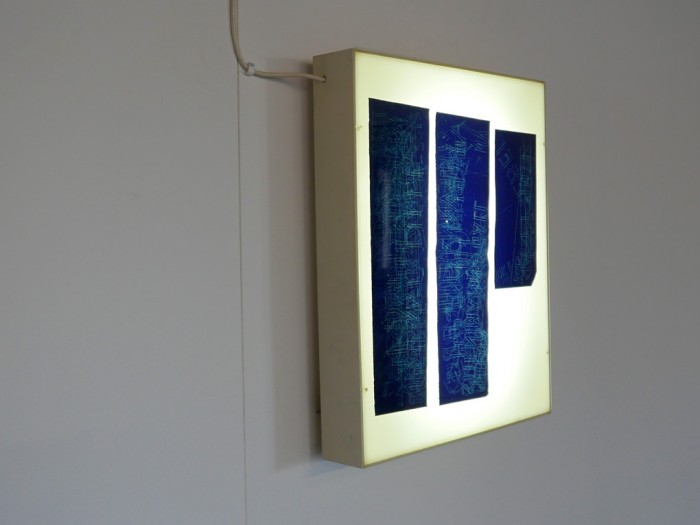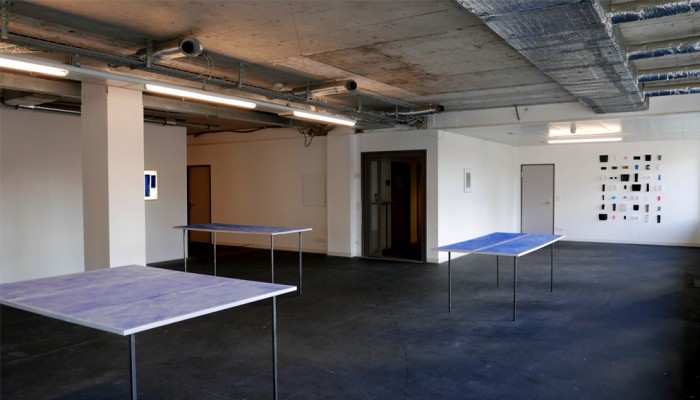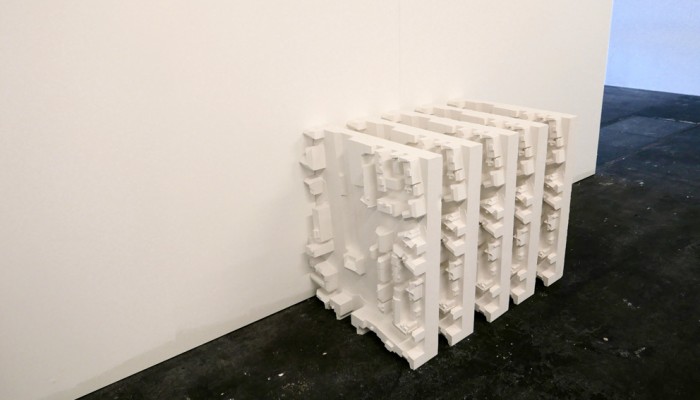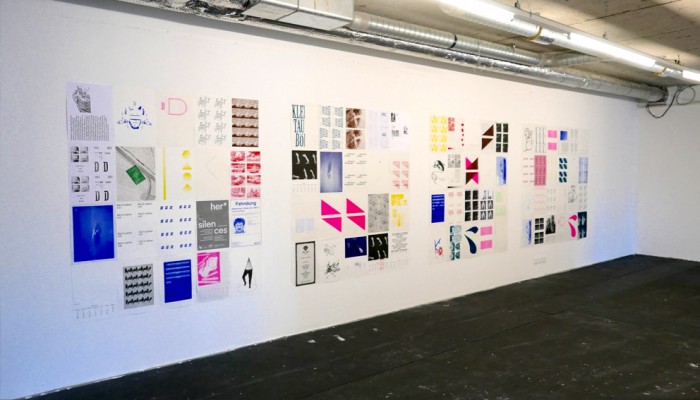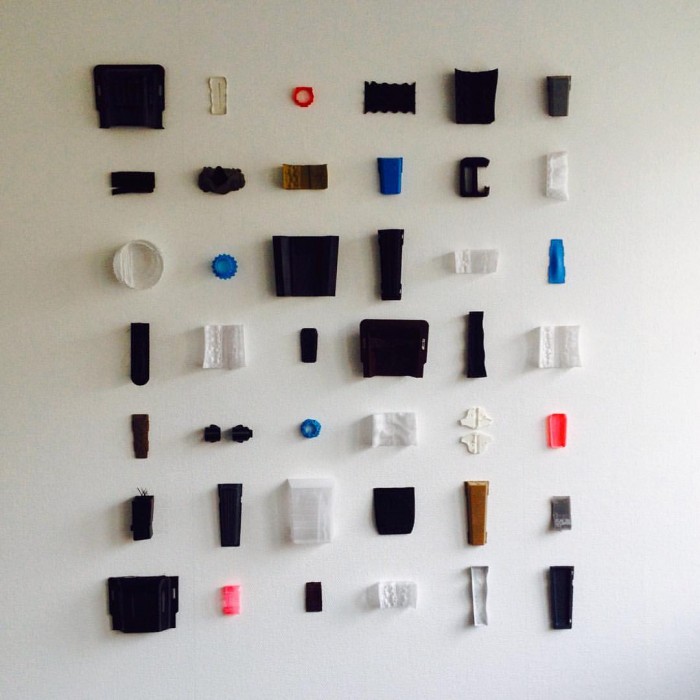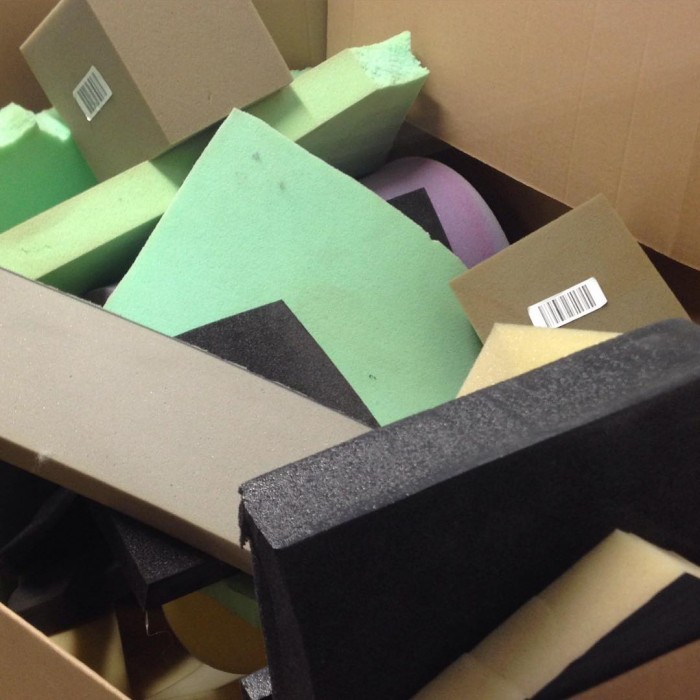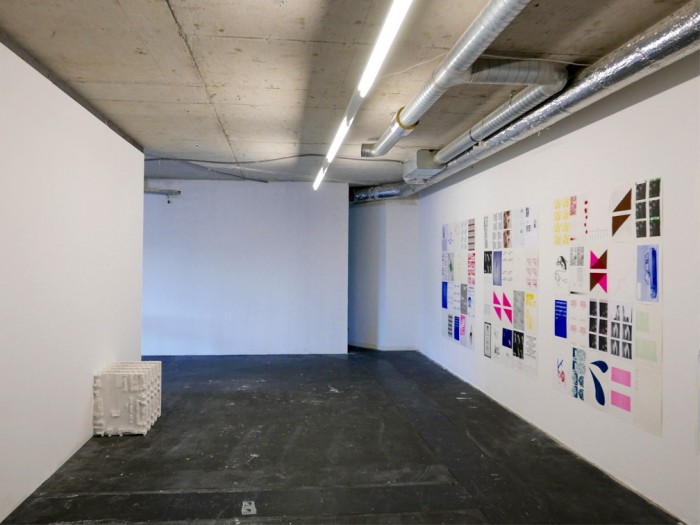Counter Space, Zurich, 2015
( from the exhibition handout)
For the realization of his new installment of works at Counter Space, João Vasco Paiva has been exploring the discarded possibilities during the processes of production, by collaborating with a number of Zurich’s craftsmen, manufactures, and producers. The urban professionals work in a surprising array of fields from shoe repair, car parts manufacturing, to stone masonry and butchery. The artist also accessed several production sites, with its more passing, anonymous makers, such as the cultural organizations Dynamo and the Kulturbüro, and the Zurich University of the Arts.
In an assemblage of found objects one gets to see the visible evidence of local producers, not of their finished outcome, but rather of daily actions and their discarded products. It was a curi- osity about ancient trades and handiwork, traditions that although now modernized exist since generations, that initiated the artist’s wish to embark on the project. Historically the guilds, or Zünfte in German, were strongly embedded in the political culture of Zurich, and despite origi- nally functioning as a mediating body for the fairness within commerce and crafts, it was later to be the richest merchants and nobility that ultimately gained a foothold in governing the city, with normal craftsman having little political power. Paiva frequented the various artisans at their workshops and stores, located primarily in Kreis [city districts] 4 and 5. Former working-class districts, enclaves of craftsmen’s workshops exist in courtyards and street-level, despite, in recent years becoming rarer in the inner city landscape.
The multiplicity and variety of error and form is one current in the exhibition. This can be per- ceived in the wall installation Kulturbüro, made up of surplus or faulty Riso prints from the Kulturbüro accumulated by the artist. (Kulturbüro is Switzerland’s first culture office supported by Migros Kulturprozent which allows cultural producers to loan technical equipment, and use their facilities.) They visually chronicle the recent cultural events of the city, as well as the work of various designers and artists, such as Eva Rust and Kerstin Schroedinger. Left at the office, the posters and other draft prints are chosen rejects. Sometimes lacking in information, they are half-finished, missing, say, a color layer or printed wrong.
In another instance, Druck-Resten, the artist has colected rejected 3D-printed objects from the TEC LAB of the ZHdK. The selection was skewed towards objects of a more abstract nature. An- other strand of work discretely manipulates and lays bare the maker’s mark in its various forms. In Mürset three carbon papers have been collected from a monumental mason. Skilled in stone masonry, such professionals create gravestones and other memorials. During the engraving process the mason inscribes the name of the deceased, dates of death and birth and simple sayings or verses through the use of stencils.
Four tables are assembled in the main space of Counter Space, with different sizes and heights, and the tops covered by rubbings. The tables are reproductions of the tables from three sites: Dynamo, a cultural organization in Zurich with a woodwork station and metal workshop, Gregory Clan, a furniture manufacturer, and Benetti AG, an automotive spare parts manufacturer. To match the original surfaces of the tables, Paiva has made ink rubbings on Chinese calligraphy paper of the original tables, still in use. Another set of rubbings is mounted onto the walls: frottages of cutting boards given to a butcher, a barista and a waiter.
Carbon paper, an archaic recording method, used for headstones or other reliefs, references as well, ways of registering commercial transactions, and in this case, documents actions of hammering, soldering, printing, chopping, sanding, chiseling, burning, scratching and many more, forming a fabric of tactile connections, contrasts, and connotations. The documentation is wilfully raw, and doesn’t leave space for the artist’s commentary, a transparency that allows for a primal recording of time and human action.
The project is in partnership with Connecting Spaces Hong Kong – Zurich, an initiative by Zurich University of the Arts ZHdK.
